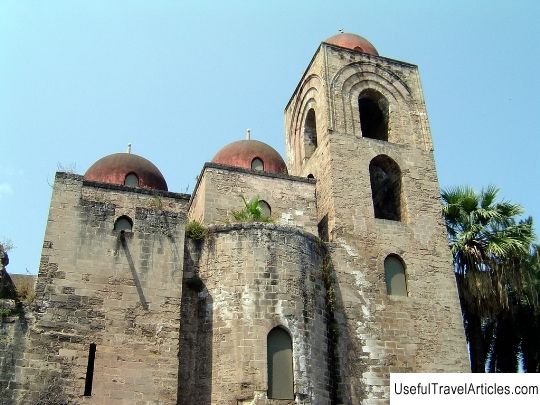Church of San Giovanni degli Eremiti in Italy, resort of Sicily
Rating: 7,9/10 (4321 votes)  San Giovanni degli Eremiti is a former Benedictine monastery, one of the finest examples of the Arab-Norman style. The monastery is located between the Basilica of San Giuseppe in Cafasso and Palazzo Normanni, on Via Benedittini. According to legend, a pagan temple of Mercury stood on this site until the 4th century. Soon this territory was taken over by a noble family, in the future from which Gregory the Great came. In the 6th century, Gregory the First founded a Benedictine monastery here, which he consecrated in honor of the Apostle Hermias from 70. After the Arabs took possession of the city, the monastery, along with other religious buildings, turned into a mosque. The research carried out on this site, contrary to all expectations, did not confirm the above legend, since no traces of early buildings were found on the site of the monastery. This legend was probably invented to give the monastery more grandeur. The first written mention of the monastery dates back to the reign of Roger II. In 1136, the king ordered the construction of a Benedictine monastery near the royal palace for the Anchorites from Montevergine. The abbot of the monastery, having received the rank of bishop, became Roger's confessor, he also had the right to perform services in the Palatine Chapel. Roger II also planned to equip a family tomb in the monastery, but this was never done. The monastery was consecrated in honor of John the Evangelist. Subsequent documentation on the history of the monastery has practically not survived. Historians believe that after the death of Roger II, the monastery fell into decay. In 1464, the Benedictines from Santa Martino delle Scale were moved to the monastery. In the first half of the 16th century, restoration work was carried out at the monastery with funds allocated by Charles the Fifth. In 1866, the monastery was secularized. And 26 years later, during the restoration work under the direction of Giuseppe Patricolo, the monastery returned to its historical Arab-Norman appearance. Today, the monastery of San Giovanni degli Eremiti houses a museum. The monastery church is one of the finest examples of the Arab-Norman style. In plan, the church is made in the form of a truncated Latin cross, connected to a three-apse Byzantine structure. In Norman Sicily, such a plan is most common. The only nave is divided by arches into three parts. The main apse of the church protrudes beyond the outline of the structure, while the other two - – altar and deacon – are placed in the branches of the transept.    We also recommend reading Ponte Pietra Bridge in Italy, Verona resort Topic: Church of San Giovanni degli Eremiti in Italy, resort of Sicily. |




